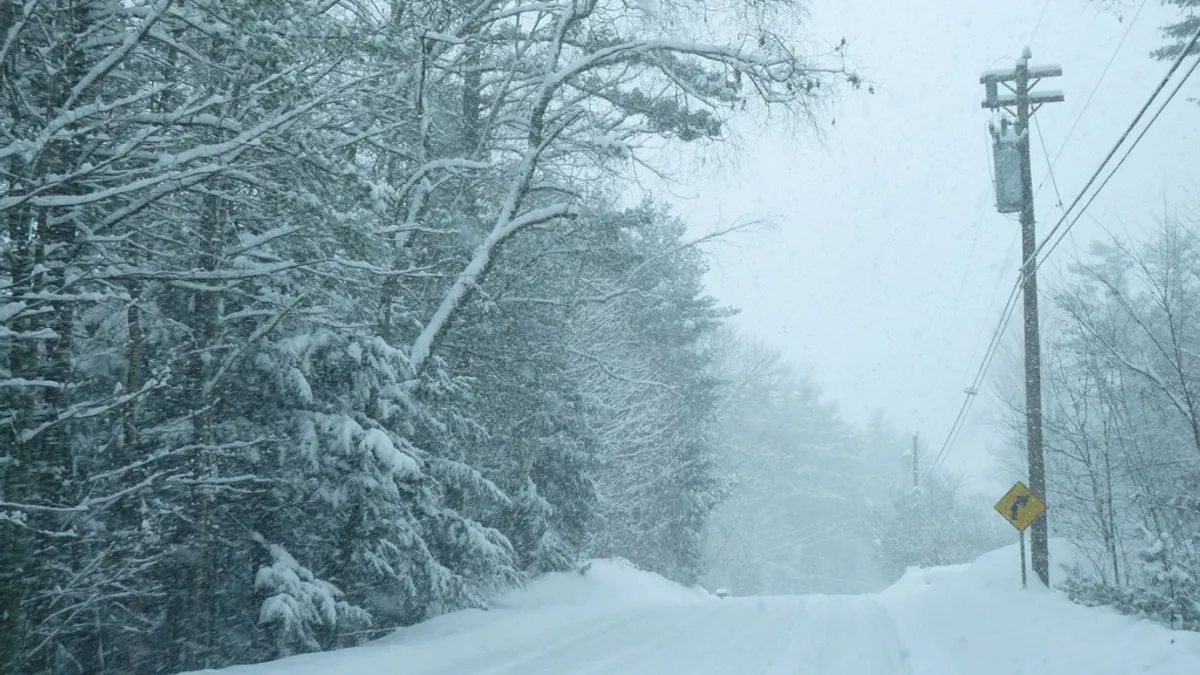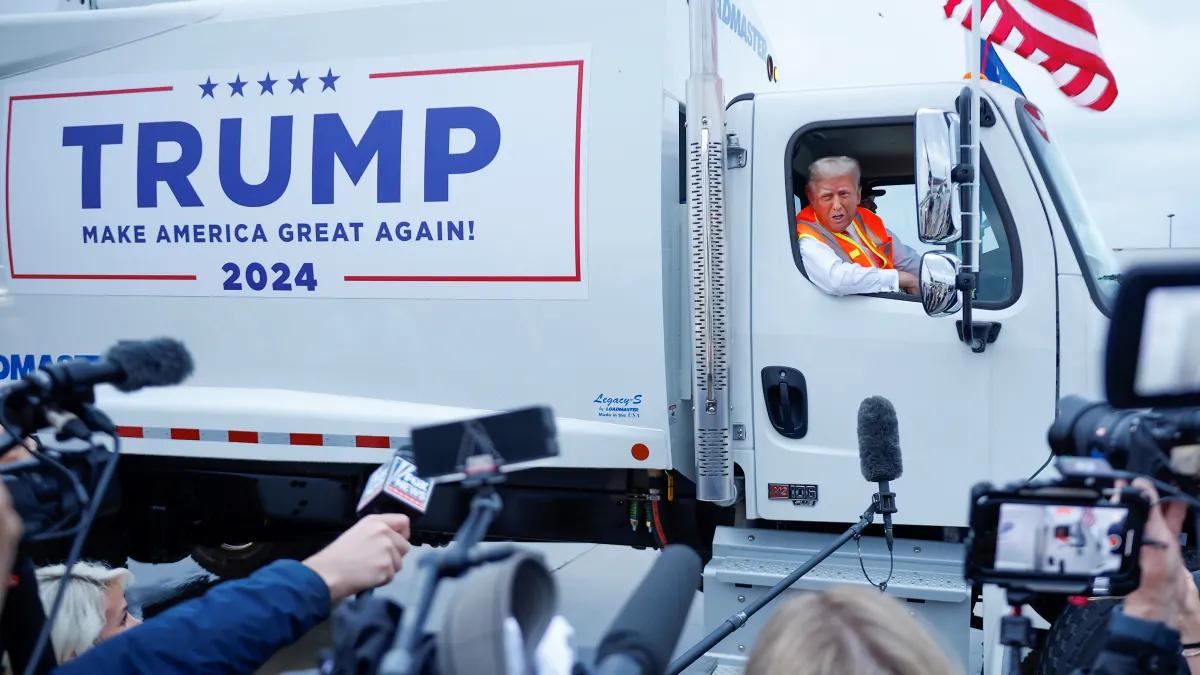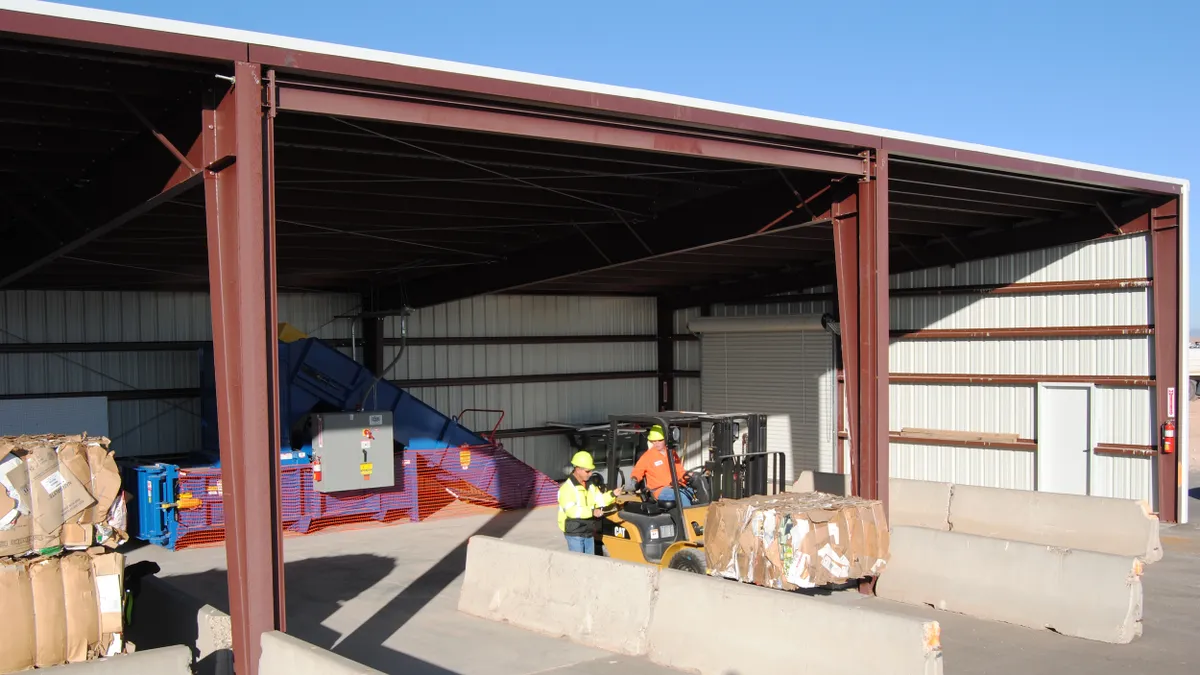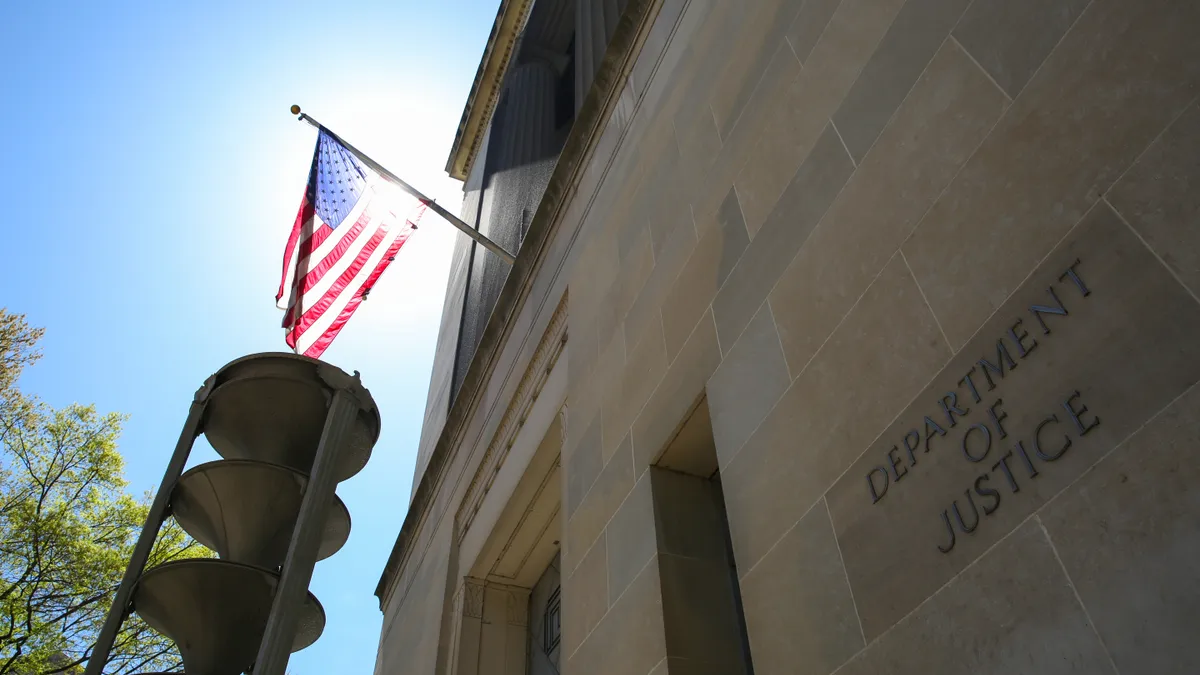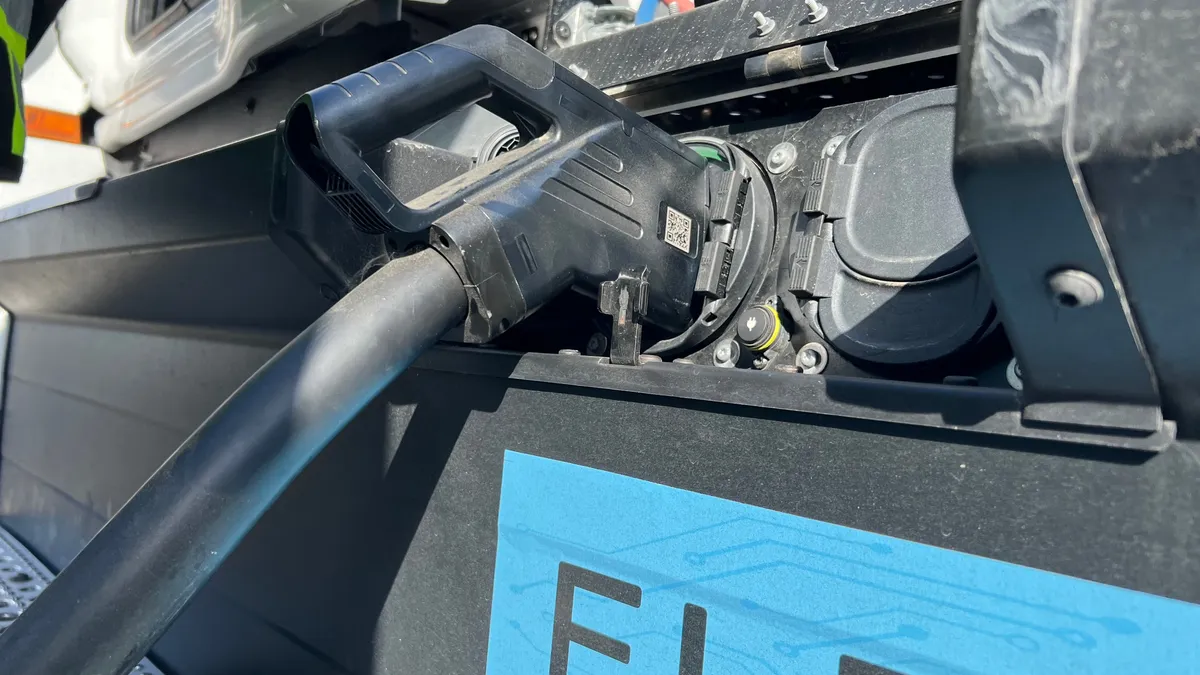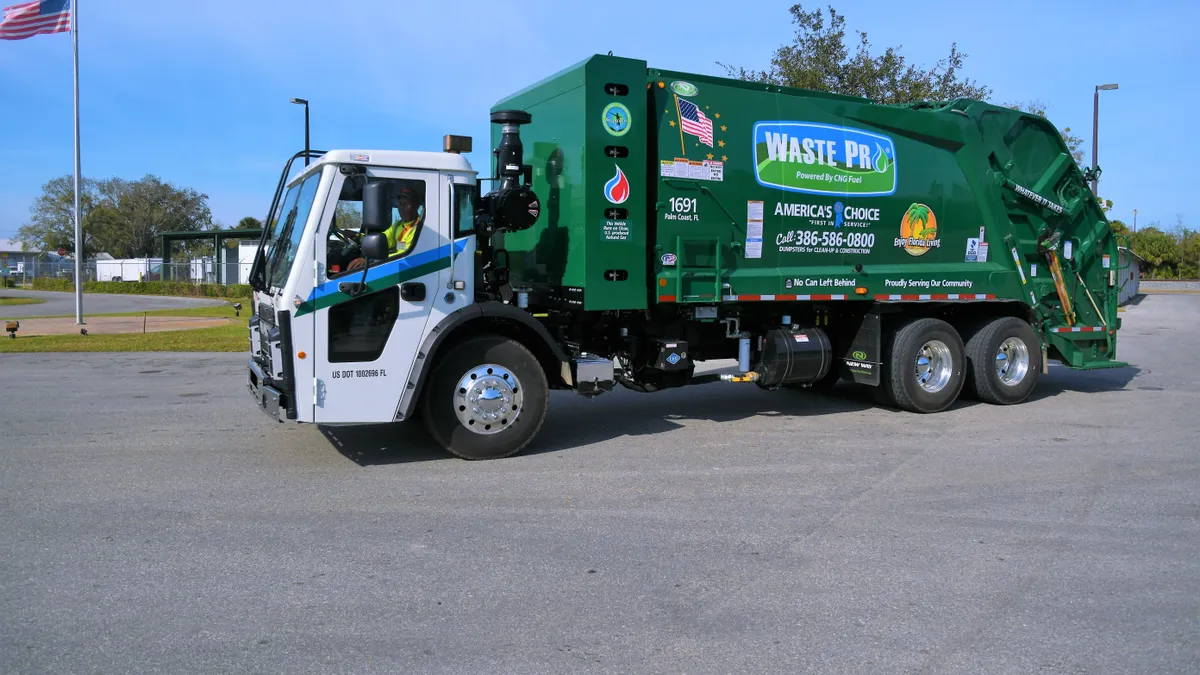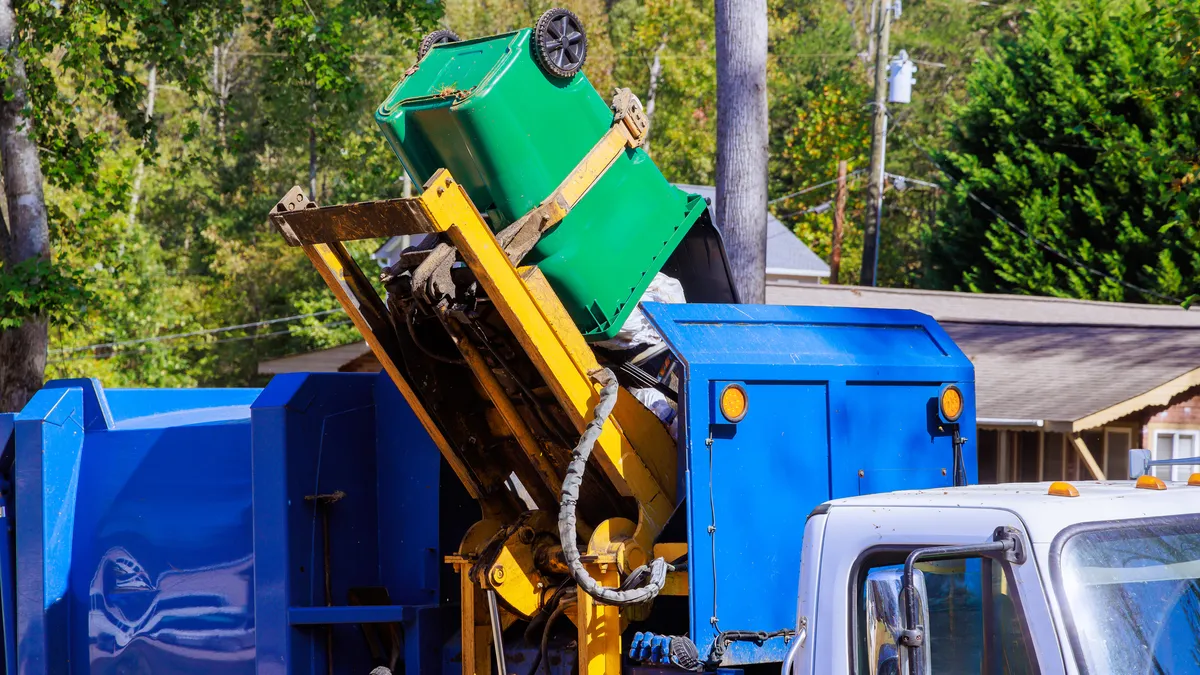Editor's Note: This story was originally published on Waste Dive on Dec. 3, 2015.
Heavy snowfall can throw a monkey wrench in trash collection operations, calling on municipalities and private haulers to meet even greater demands than the rest of the year. Northern regions that are "digging themselves out" say they are doing it through fast teamwork among city crews, contractors, residents and businesses.
Innovation, too, is helping some stay on top of their game — from having Sanitation Department workers temporarily switch hats, to equipping trash trucks with spreaders and plows.
The New York City Sanitation Department cancels collections just after a winter storm, and switches about 2,400 sanitation staff to snow function. They work two 12-hour shifts, operating spreaders and plows — a rare role for trash departments, even up north.
Communication is key
"We send an alert [through the city and media] that we are not collecting, but for a large part of our population, this is not their first rodeo. They know during emergency snow operations we will not collect," New York City Sanitation Department Commissioner Kathryn Garcia told Waste Dive.
Other municipalities keep communication open through tools from downloadable snow-ready flyers for residents, as is the case in Providence, RI, to investing in software apps like the one found on Boston City’s website. Residents can easily plug in their address to see if pickup is a "go."
The real challenges come once the snow stops and it’s time to transition. Although the storm may be over, New York workers are still removing snow, and clarifying when haulers can board their trucks and resume collection becomes harder.
Additionally, sometimes residents don’t know what type of waste to put out or when to do it, said Garcia, who is focusing on improving post-storm messaging.
Unpredictable weather adds more confusion. "Say I have 2,400 people on [snow function] and no snow comes. So I move to go after collections, but the public may not have put out material,” she said, though over-preparing has worked better than under-preparing.
Going into overdrive
Once New York City is back on track, haulers could collect up to three days of trash in one day to catch up.
"If we have challenges, we stay in split shifts until we get all the backlog," said Garcia, whose city managed to stay up on collections last winter, through an average of three weekly snowfalls.
The model works for New York City with its large staff and high-dollar equipment. But it’s no easy task, as New York has very limited storage space for refuge, which means moving fast and staying flexible.
"We take pride in our ability to move between roles of emergency snow and normal collections. Normally, 48 hours after the last snowfall we are back to normal collection mode where customers are being serviced," said Garcia.
How Minneapolis juggles snow and trash collections
In Minneapolis, trash collection is a joint effort between the city and its contractor, Minneapolis Refuse Inc. During heavy precipitation, the team works to address snowbound carts, which are either "tagged" and "bagged out", or "bagged out" only.
"Tagged" means putting a notice on a cart, stating that the cart couldn't be emptied and when it must be shoveled out to avoid a $30 per cart fee. "Bagged out" means crews open the cart by hand and pull bags out.
Following at least two inches of snow, city ordinance requires customers to shovel a 36-inch-wide path from their carts to their collection point at the alley or curb line, within a specified time. If customers fail to do so, the city notifies them first, then shovels out the carts for a fee.
Customers get a grace period following snowfalls exceeding two inches. So if a customer's collection day is within that grace period, and they haven't shoveled, the city can't clear the snow and ice. If there’s another heavy snowfall within 48 hours before the next collection and the carts still aren't cleared, the increased snow becomes a hurdle.
Still, despite massive precipitation every year, and the challenges that come with it, it’s trash service as usual, all winter; it’s rare to miss a pickup, said David Herberholz, the city’s Solid Waste and Recycling Division director.
Gallegos Sanitation's approach to the wintry weather
Colorado solid waste management company Gallegos Sanitation Inc.'s toughest task is dealing with unplowed commercial stops and side streets.
"If plows do not run we could have problems picking up stops. Also the landfills may close due to high winds, which create blizzard conditions," said Austin Self, GSI’s operations manager. Winter weather-induced traffic jams further test haulers, slowing run times to the landfill or recycle transfer station. But the company operates extra vehicles, which sometimes means that supervisors jump in a truck to help out.
No matter how many trucks are out there, towns have their bottle necks. Some Chicago collectors have reported delays of two hours because of lingering snow, and in some cases have to forgo pickups and move to the next alley.
But even when the snow piles up so high that trucks, or customers themselves can’t drive down the street, customers still expect their trash to be picked up, said Self.
"We take pride in giving the best customer service, but we must operate safely," he said.
His advice to other trash collection companies? "Be safe and be smart. This means that if the majority of trucks are getting stuck, then it might be wise to bring them in and try again later."


